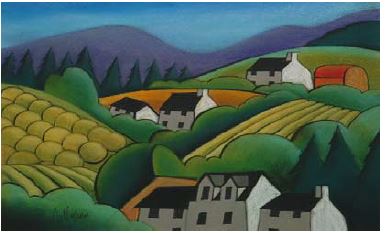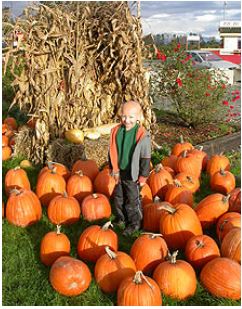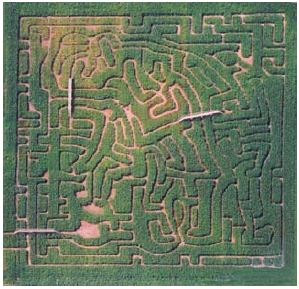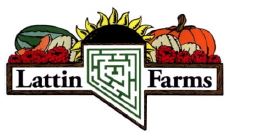Introduction
When you hear the word “vacation”, you may picture sunny beaches in Maui, historical monuments in Washington D.C., or twisty roller coasters at Six Flags. Although these places can be relaxing, enlightening, and entertaining, they are nearly always crowded with other vacationers. As a result, vacations can often end up being more stressful than the hectic everyday environment left behind.
For those who wish to enjoy a peaceful and edifying getaway and want to avoid urban crowds in the process, rural tourism is a unique alternative. Rural tourism is defined as “the natural life tourism, through which the customer may access the natural environment as opposed to commercially developed tourist activities and locations” (Hill et al., 1996, pg. 50). In general, rural tourism encompasses any recreational or leisure activity in the countryside. One of the fastest growing sectors of rural tourism is farm tourism, which is also commonly referred to as agritourism.
Farm tourism has taken on several definitions throughout the years. Two of the more recent definitions are: “rural enterprises which include both a working farm environment and a commercial tourism component” (Weaver and Fennell, 1997, pg. 357), and “an alternative farm enterprise comprising one of several possible pathways of farm business development” (Ilbery et al., 1998, pg. 355). The list of attractions that can be found within the farm tourism industry is extensive, yet unparalleled to common tourism activities. Typical attractions at agritourism destinations include farm tours, hay rides, educational demonstrations, fresh produce markets, picnic areas, and cozy cafes. Elaborate agritourism destinations usually provide overnight accommodations in the form of bed and breakfasts, bunkhouses, or campgrounds.

Why Agritourism?
The majority of farmers choose agritourism enterprises to develop an additional source of income to their traditional agricultural practices. Over the past century, farming has become more technologically advanced than ever before. In turn, many small-scale farmers, due to economies of scale have been forced out of the industry completely or have found alternative sources of revenue. Thus, many small-scale farmers have found farm tourism to be an efficient means to supplement their declining farm incomes, while still running their valued farming operation. Other farmers have completely abandoned their traditional farming processes, because the profits from their agritourism business vastly outweigh those of their previous operation. However, in order to have a successful agritourism enterprise, it is necessary for farmers to maintain a level of real agricultural activities on their land to preserve the traditional farming ambience (Busby and Rendle, 2000).
Along with maintaining a sense of authenticity, individuals involved in the farm tourism industry must also be aware of specific elements of the servicescape (Coomber and Lim, 2004). The servicescape consists of ambient conditions that affect one or more of the five senses. On a farm tour, variables such as the noise level, the amount of odor lingering in the air, the outdoor temperature, the number and size of signage around the farm, and convenience all affect the servicescape and can play a major role in the customers’ level of satisfaction with the tour (Coomber and Lim, 2004).

For many farmers who have lived on a farm for most of their life, ambient conditions such as farm noise and smells do not bother them. Conversely, for tourists who have never previously set foot on a farm, these surroundings may adversely influence their enjoyment. Hence, when farmers decide to make the transition from traditional agricultural to agritourism, it is necessary that they understand their customers (Busby and Rendle, 2000).
Why Agritourism in Nevada?
- Large population centers and tourist destinations to draw from.
- Opportunity to expand farm income and decrease risk through diversification.
- Community economic development opportunities.
- Satisfying interaction with learning motivated visitors.
Approaching Agritourism
One way to gain knowledge about tourists and the tourism industry is to network with individuals who run similar agritourism businesses. In Georgia, a group of ten winery owners recently joined together to form Southwest Georgia Escapes, a cooperative that aims to market south-western Georgia as a single agritourism destination (Scroggs, 2004).
Along with sharing information with analogous suppliers, farm tourism enterprises can also benefit by networking with complementary businesses that can add to the overall experience. For example, if an agritourism operation is close to a lake, it may be advantageous for the owner to form a relationship with a local charter fishing company. By networking in this manner, not only would the tourists’ experience of the countryside be more complete, but both neighboring businesses would be able to earn revenue from the same customers.
Another marketing necessity employed by many successful agritourism enterprises is an easily accessible Web site. According to an article published in USA Today, web sites can provide a more valuable channel for advertising agritourism businesses than radio or television (Groppe, 2004). With a Web site, owners of farm tourism operations can efficiently keep prospective visitors up-to-date about events and products at their farms. However, one major drawback to this marketing method is the lack of Internet access in many rural areas where farm tourism thrives (Groppe, 2004). Yet, while many farmers may be without Internet access, the majority of tourists can easily connect (Ribeiro and Marques, 2002). New tourists are more experienced travelers, more educated, and wealthier. Thus, Internet marketing on behalf of agritourism destinations is a highly effective way to reach this audience. Additionally, by capturing an audience with an above average purchasing power, owners of farm tourism enterprises can expect higher cash inflows (Ribeiro and Marques, 2002).
While many modern tourists lack an understanding of farming and farm life, their desire to be educated on and show an appreciation for the subject seems to be increasing. In fact, a recent survey conducted by the University Georgia Center for Agribusiness and Economic Development, shows that agritourism is gaining popularity among people, especially those who want to take different types of vacations (Scroggs, 2004).
Steps to Agritourism
- Determine the potential attendance at your farm. Is the farm near a major population center?
- Network with others in your local agritourism industry.
- Investigate marketing avenues, such as farmers’ markets and Internet Web sites.
- Consider visitor friendly adjustments that may need to be made on the farm.
- Investigate legal and financial aspects of converting your farm to a tourist destination.
Example of Nevada Agritourism
Located in Fallon, Nevada, Lattin Farms offers a complete farm experience for tourists of all ages. Though its current owners, Rick and B. Ann Lattin, are relatively new to the agritourism business, they are both experienced farmers. According to Rick Lattin (March 2005), the Lattin family has farmed in the Lahontan Valley for five generations. Since Rick and B. Ann took over Lattin Farms in 1977, they have been selling fresh produce to farm visitors. Today, while they continue to sell products from farm produce stands, they also service a larger customer base by attending ten nearby farmers’ markets. Along with fresh produce, the Lattins also sell specialty breads, muffins, brownies, homemade jams, and dill pickles.
Other than purchasing high quality food products, visitors at Lattin Farms can enjoy a hayride around the farm, a walking antique tour, multiple flower and herb gardens, a 10-acre pumpkin patch, and a spacious picnic and barbeque area. In addition to the complete farm ambience, Lattin Farms is home to one of the largest corn mazes in the state. This five-acre attraction is open annually from August through October, while the corn is high. Each year, the challenging corn maze takes on a new theme. Last year’s space-themed maze (A-Maze-in Space) was designed by Adrian Fisher, a world famous maze-designer from London who holds multiple records in the Guinness Book of World Records for his work in maze design. According to Rick Lattin, the twelve-foot high corn maze is the biggest draw of visitors to his farm.

Due to the popularity of the corn maze, the Lattins have taken extra precautions over the past few years to ensure the safety and wellbeing of the farm visitors. Specifically, they have hired extra part-time workers to monitor the maze, installed better lighting around the maze, and expanded the parking area. Not only have these changes made Lattin Farms a safer place to visit, they have also helped to enhance the overall experience for tourists at the farm.
Along with tourist visits, Lattin Farms hosts tours for several thousand elementary school students each year. For many students, an educational field trip to Lattin Farms is the first time they have ever been exposed to agriculture and the systems of a working farm. To aid in the learning process of the students that visit the farm, employees of Lattin Farms have compiled a series of related educational topics that meet the state standards for each grade level. For example, a first-grader should be able to use his or her five senses to investigate the natural aspects of the farm, while a sixth-grader is expected to be able to describe how farm machinery uses motion.

As Lattin Farms and other agritourism enterprises prepare for another successful growing season and tourist rush, many other traditional farms are beginning to take notice. For many small-scale farmers, agritourism provides an efficient alternative source of income to their conventional agricultural practices. Moreover, the establishment of farm tourism destinations has given farmers an opportunity to support their livelihood and continue to be a part of an industry they love. And for tourists and vacationers alike, agritourism is an exciting and unique experience that cannot be found at popular urban attractions.
Additional Information
The AGMRC Small Farms Center has publications on agritourism and a directory of agritourism sites in California.
The NRCS publication “Taking the First Step: Farm and Ranch Alternative Enterprise and Agritourism Resource Evaluation Guide” is available online at NRCS.
References
Busby, Graham, and Samantha Rendle. “The transition from tourism on farms to farm tourism.” Tourism Management 21.8, 2000:635–642.
Coomber, L., and C. Lim. “Farm Tourism: A Preliminary Study of Participants’ Expectations and Perceptions of Farm Tours.” International Environmental Modelling and Software Society, 2004.
Groppe, Maureen. “Farmers strike pay dirt with Web.” USA Today May 19, 2004.
Hill, D., E. Sunderland, C. O’Cathain, and G. Daily. “Rural Tourism Development in Ireland.” Tourism and Hospitality Research, 1996.
Ilbery, B., I. Bowler, G. Clark, A. Crockett, and A. Shaw. “Farm-based tourism as an alternative farm enterprise.” Regional Studies 32.4, 1998:355-364.
Lattin, Rick. Interview conducted at Lattin Farms in March of 2005. Also, see the Lattin Farms Web site, last updated November 14, 2004.
Ribeiro, Manuela, and Carlos Marques. “Rural Tourism and the Development of Less Favored Areas.” International Journal of Tourism Research 4, 2002:211-220.
Scroggs, Craig. “Great Escapes: Agritourism co-op helping Georgia farmers diversify.” Rural Cooperatives, September/October 2004.
Weaver, D. B., and D. A. Fennell. “The vacation farm sector in Saskatchewan: A profile of operations.” Tourism Management 18.6, 1997:357-365.
Curtis, K. and Monson, J.
2005,
Agritourism: Opportunity for Farm Diversification in Nevada,
University of Nevada Cooperative Extension


